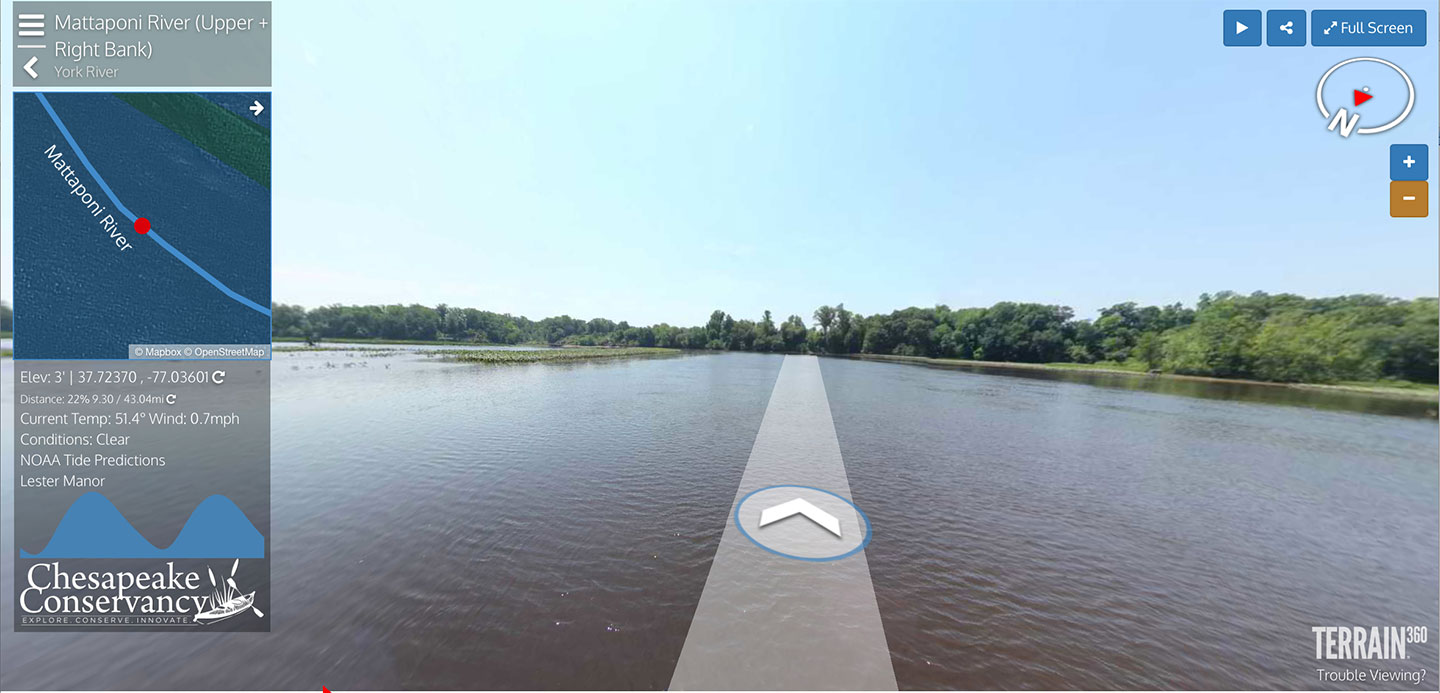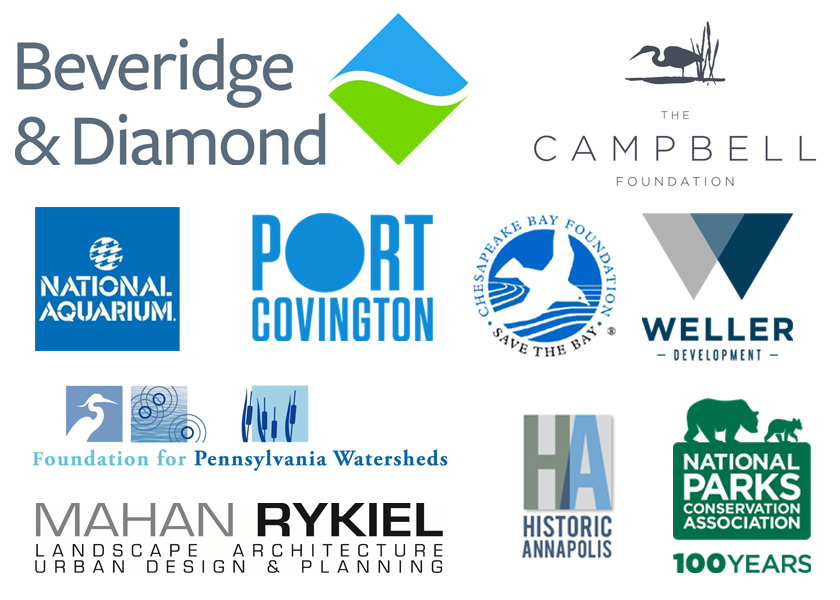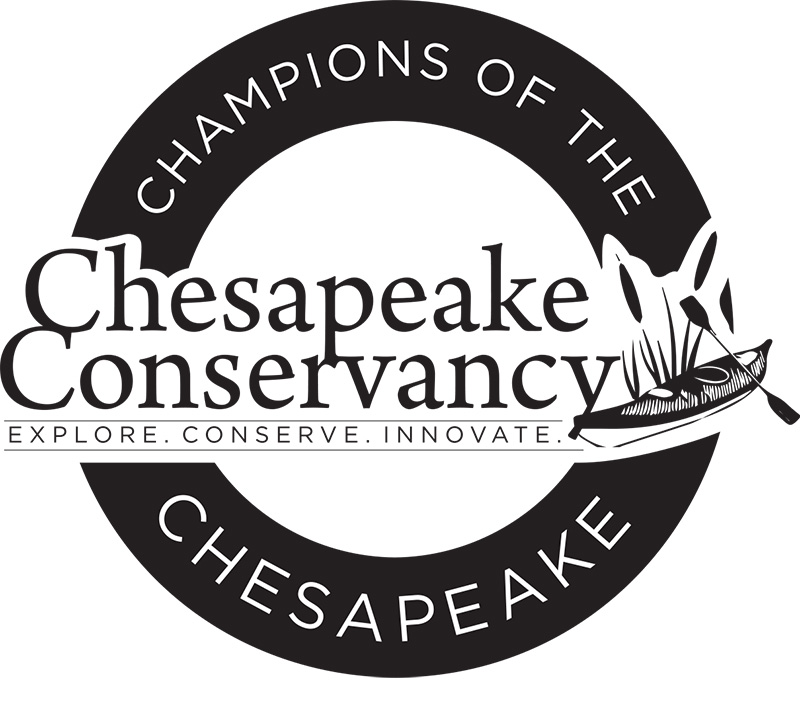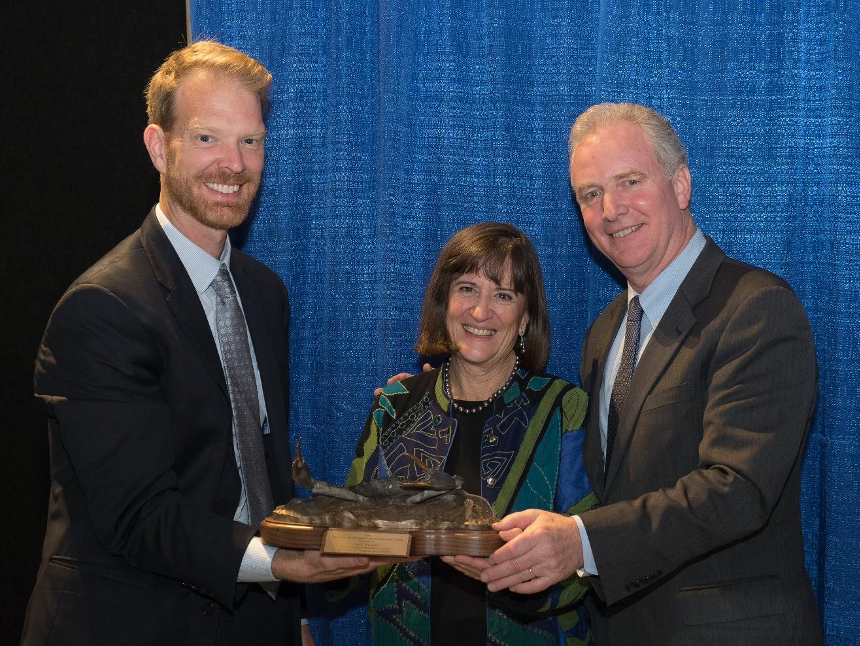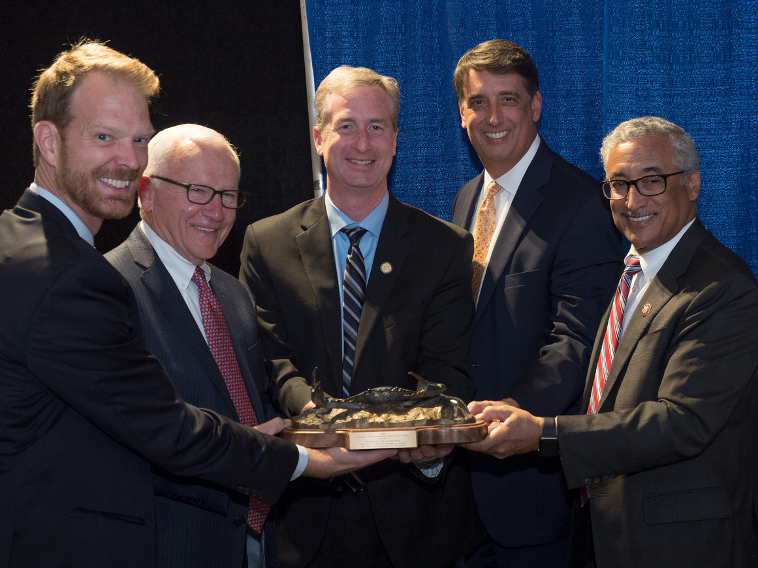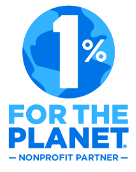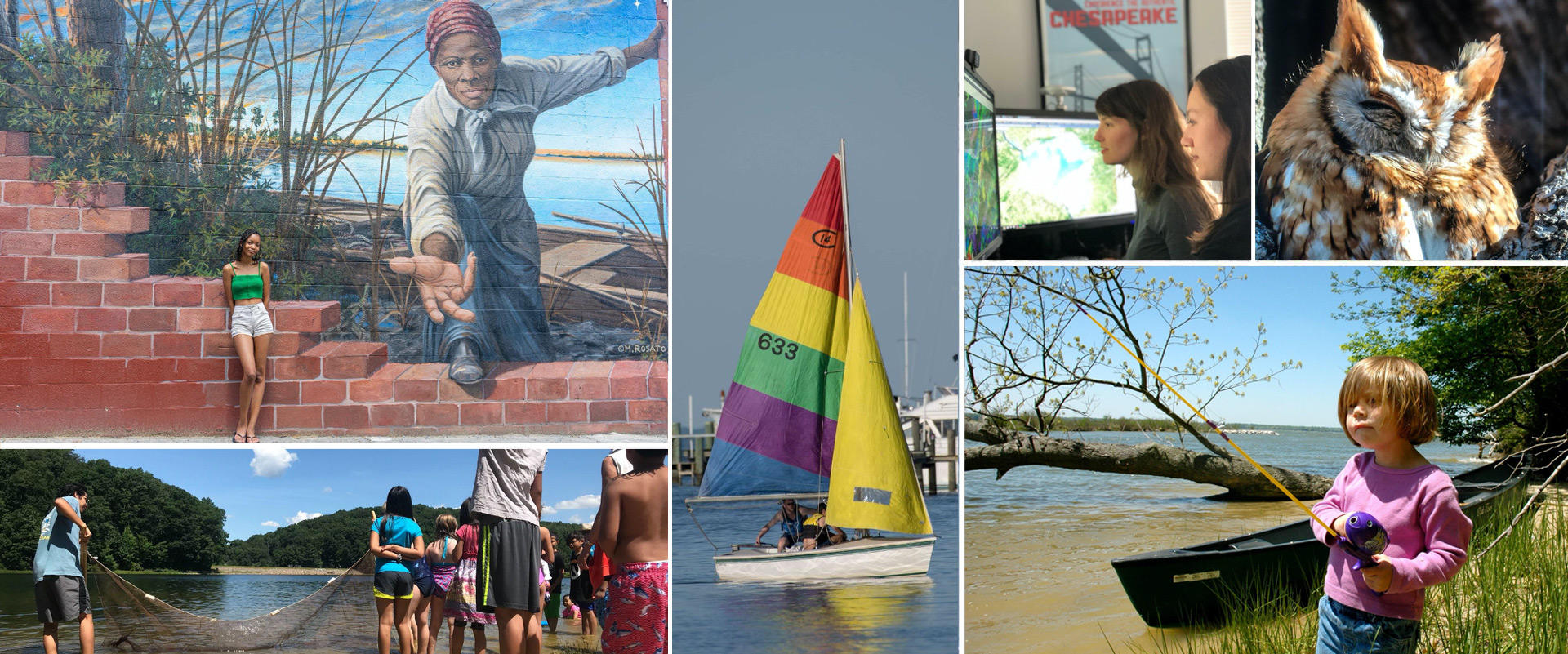Our focus is to conserve and restore the natural and cultural resources of the Chesapeake Bay watershed for the enjoyment, education, and inspiration of this and future generations.
We believe the Chesapeake is a national treasure that should be healthy, accessible to everyone, and its watershed a place where people and wildlife thrive.
To conserve and restore the natural and cultural resources of the Chesapeake Bay watershed for the enjoyment, education, and inspiration of this and future generations.
We serve as a catalyst for change, advancing strong public and private partnerships, developing and using new technology, and empowering environmental stewardship.
- Advocate for and implement the priorities of the Chesapeake Bay Gateways and Watertrails Network and the Captain John Smith Chesapeake National Historic Trail (Chesapeake Trail) in partnership with the National Park Service
- Quantify the conservation movement and empower environmental stewards
- Defend and expand conservation, recreation and restoration programs
- Enhance collaboration and leverage partnerships
- Develop replicable approaches
Equitably Connecting, Conserving, & Restoring the Bay
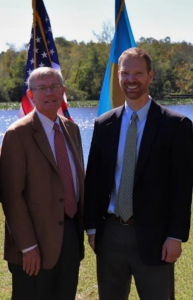 In 2019, Chesapeake Conservancy reached the end of several significant conservation journeys. Over the course of the year, working with many partners, our achievements included the protection of 252 acres at Fones Cliffs on the Rappahannock River, the protection and expansion of Quiet Waters Park in Annapolis, the 438-acre expansion of Blackwater National Wildlife Refuge on the Nanticoke River, the protection of 105 acres on the James River for the Chickahominy Tribe, the 4,664-acre expansion of George Washington and Jefferson National Forests, the protection of 233 acres in the Nanticoke Rural Legacy Area, and the designation of Mallows Bay–Potomac River National Marine Sanctuary—the very first national marine sanctuary in the Chesapeake.
In 2019, Chesapeake Conservancy reached the end of several significant conservation journeys. Over the course of the year, working with many partners, our achievements included the protection of 252 acres at Fones Cliffs on the Rappahannock River, the protection and expansion of Quiet Waters Park in Annapolis, the 438-acre expansion of Blackwater National Wildlife Refuge on the Nanticoke River, the protection of 105 acres on the James River for the Chickahominy Tribe, the 4,664-acre expansion of George Washington and Jefferson National Forests, the protection of 233 acres in the Nanticoke Rural Legacy Area, and the designation of Mallows Bay–Potomac River National Marine Sanctuary—the very first national marine sanctuary in the Chesapeake.
Yet the biggest accomplishment of 2019 was not the end of a journey, but the beginning. This year, Chesapeake Conservancy formally adopted Diversity, Equity, Inclusion, and Justice (DEIJ) principles as an organization.
From its beginning, Chesapeake Conservancy has held DEIJ principles close to its mission. Our work to protect places and amplify voices and stories of communities of color, such as the Harriet Tubman Underground Railroad National Historical Park or Werowocomoco—one of the most important American Indian sites on the East Coast—demonstrates our efforts to practice these principles.
Despite those past efforts, we realized through this period of introspection that we were not doing enough. Through the critical self-reflection required by this process, we learned that this DEIJ journey would be life-long. Our goal as an organization is not simply to adopt a statement, but to institutionalize these principles across Chesapeake Conservancy and in every aspect of our work, both internally and externally.
We thank you for all that you do to support the Chesapeake Conservancy and our conservation mission. In the years ahead, we will be working to equitably connect, conserve, and restore the Chesapeake Bay by protecting 30 percent of the Bay by 2030 using precision conservation. On this journey, we will be grateful for your continued support as we implement DEIJ and learn and strive to walk the walk and pursue our vision for a Chesapeake that is healthy, accessible to everyone, and a place where people and wildlife thrive.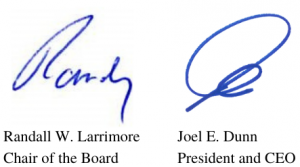
Anne W. Scott, Chair
Robert Gensler, Treasurer
Molly Joseph Ward, Secretary
Mark Belton
Thad Bench
Marc Bunting
Leslie Delagran
Joel E. Dunn
Robert E. Friend
Heather Gartman
Verna Harrison
Randall W. Larrimore
Jeffery More
John G. Neely
Dr. Mamie A. Parker
John J. Reynolds
Chief G. Anne Richardson
Richard Scobey
Robert G. Stanton
Honorary Members
Gilbert M. Grosvenor
US Senator Paul Sarbanes (ret.)
US Senator John Warner (ret.)
Emeritus Directors
Patrick F. Noonan
Charles A. Stek
David Blitzer
Keith Campbell
Charles H. “Chip” Collins
Dr. Wilton “Wilt” Corkern
Lavinia Currier
Dr. Sylvia Earle
Elinor Farquhar
Sid Jamieson
Amanda Savage Mahoney
Nancy Merrill
Joan Murray
Truman Semans, Sr.
Ann Swanson
John Turner
H.W. “Skip” Wieder
Steven Williams
Patty Allen, Director of Administration
Jeffrey Allenby, Director of Conservation Technology
Carolyn Black, Trail Partnership Associate
Michael Bowman, Partnership Communications Associate
Curtis Campbell, Controller
Jody Couser, Director of Communications
Jacob Czawlytko, Senior Geospatial Analyst
John Davy, Virginia Project & Partnership Manager
Carly Dean, Program Manager
Joel E. Dunn, President & CEO
Melissa Ehrenreich, Director of Development
Jessica Elliott, Chesapeake Conservation Corps Member
Kelsey Everett, Partnership Digital Resources Associate
Adrienne Gemberling, Susquehanna Technical Coordinator
John Griffin, Program Manager, Chesapeake Conservation Partnership
Jessica Hammond, Conservation Coordinator
Louis Keddell, Geospatial Program Manager
Jacob Leizear, Senior Geospatial Analyst
Kumar Mainali, Geospatial Data Scientist
Mary Molloy, Geospatial Analyst
Joseph McCauley, Chesapeake Fellow
Emily Mills, Geospatial Project Manager
Susan Minnemeyer, Geospatial Program Manager
Mende Naylor, Administrative Assistant
Gabrielle Roffe, Project & Partnership Coordinator
David Saavedra, Geospatial Technical Lead
Susan Shingledecker, Vice President & Director of Programs
Helen Sieracki, Annual Fund Manager
Rachel Soobitsky, Geospatial Project Manager
Lisa Spallitta, Accounting Coordinator
Susan Stephenson, Grants & Contracts Coordinator
Katie Walker, Geospatial Analyst
Emily Wiggans, Geospatial Analyst
DIVERSITY, EQUITY, INCLUSION, AND JUSTICE
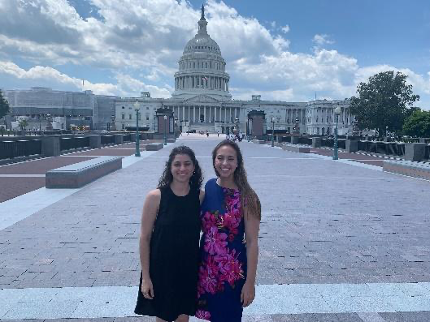
Recognizing this wasn’t enough, in 2018 we started to formalize our efforts, and we sought to build a team to collaborate and write our Diversity, Equity, Inclusion, and Justice (DEIJ) statement. In 2019, Project and Partnership Coordinator Gabrielle Roffe, whose position is funded by the National Park Service Chesapeake Bay Office (NPS Chesapeake), helped recruit Lauren A. Mariolis, a masters candidate from Duke University, to our team for the summer of 2019 as our DEIJ intern. Together they led the process to collaborate with staff and the board to write our organization’s DEIJ statement, which was officially adopted by the board as a resolution later that year.
Statement on Diversity, Equity, Justice, and Inclusion
Innovation in Conservation Begins with Diversity and Inclusion
Protecting and Restoring the Chesapeake Bay Requires Diversity in Perspective and Practice
Chesapeake Conservancy understands that protecting and restoring the natural and cultural resources of the Chesapeake Bay watershed require intentional commitment to inclusive practices and narratives within the conservation movement. Through our work we celebrate and elevate the people, places, and cultures of the region, especially by engaging underrepresented communities. Committing to the values of Diversity, Equity, Inclusion, and Justice is critical to achieve our vision of a Chesapeake that is healthy, accessible to everyone, and a place where people and wildlife thrive. To that end, we commit ourselves to Diversity, Equity, Inclusion, and Justice, both in our programmatic priorities and our internal organizational development, through inclusive recruitment of staff and board members and fostering a diverse and inclusive culture.
CONSERVATION, RESTORATION, AND PUBLIC ACCESS
Mallows Bay–Potomac River National Marine Sanctuary (NMS)
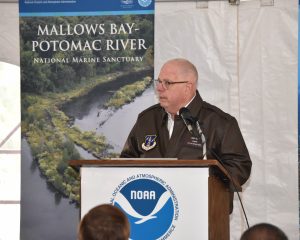 For many years, Chesapeake Conservancy has been a leading partner in a community-driven effort to create an 18-square-mile underwater park for Mallows Bay–Potomac River through designation as the Chesapeake’s first national marine sanctuary. That dream became a reality when the designation became effective on September 3, 2019, following a review period by US Congress and the state of Maryland. Mallows Bay–Potomac River NMS, the first new national marine sanctuary in 19 years, is famous for its “Ghost Fleet” of shipwrecks, which includes more than 100 wooden steamships built for the US Emergency Fleet during World War I.
For many years, Chesapeake Conservancy has been a leading partner in a community-driven effort to create an 18-square-mile underwater park for Mallows Bay–Potomac River through designation as the Chesapeake’s first national marine sanctuary. That dream became a reality when the designation became effective on September 3, 2019, following a review period by US Congress and the state of Maryland. Mallows Bay–Potomac River NMS, the first new national marine sanctuary in 19 years, is famous for its “Ghost Fleet” of shipwrecks, which includes more than 100 wooden steamships built for the US Emergency Fleet during World War I.
Grace Furnace
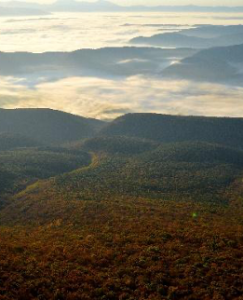
The US Forest Service conserved Grace Furnace, a large tract of land in the James River watershed in southwest Virginia. Chesapeake Conservancy, along with partners, advocated for the Rivers of the Chesapeake Land and Water Conservation Fund (LWCF) Collaborative Landscape proposal, which helped acquire federal funds for nearly 4,700 acres in the Blue Ridge Mountains at the George Washington and Jefferson National Forests. The property was purchased for $5 million by the Open Space Institute (OSI), with funding from the Wyss Foundation. This was the largest expansion of national forest in Virginia in more than 50 years. The US Forest Service honored Chesapeake Conservancy and partners with the 2019 Regional Forester Honor Award.
Quiet Waters Park
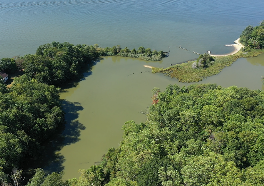
Chesapeake Conservancy spearheaded an ambitious public-private partnership to add 19 acres to Anne Arundel County’s Quiet Waters Park, including waterfront access to South River, a tributary of the Chesapeake Bay in Annapolis, Maryland. The purchase was made possible through state funding from Maryland’s Program Open Space, county funding, and a private donation from Chesapeake Conservancy made possible through the generosity of James and Sylvia Earl, two of Anne Arundel County’s most dedicated philanthropists.
Fones Cliffs
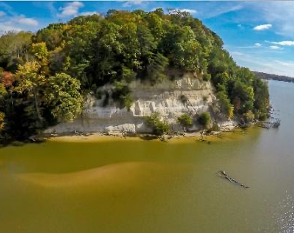 A portion of the nearly pristine Fones Cliffs property along the Rappahannock River in Virginia was purchased and added to the Rappahannock River Valley National Wildlife Refuge, thanks to appropriations from the Land and Water Conservation Fund (LWCF), one of our top federal legislative priorities. We thank The Conservation Fund, which bought the 252-acre tract and sold it at cost to the US Fish and Wildlife Service. There is still more work to be done to conserve the rest of Fones Cliffs, the ancestral homeland of the Rappahannock Tribe.
A portion of the nearly pristine Fones Cliffs property along the Rappahannock River in Virginia was purchased and added to the Rappahannock River Valley National Wildlife Refuge, thanks to appropriations from the Land and Water Conservation Fund (LWCF), one of our top federal legislative priorities. We thank The Conservation Fund, which bought the 252-acre tract and sold it at cost to the US Fish and Wildlife Service. There is still more work to be done to conserve the rest of Fones Cliffs, the ancestral homeland of the Rappahannock Tribe.
James River Acquisition for the Chickahominy Tribe
Chesapeake Conservancy joined Chief Stephen Adkins of the Chickahominy Tribe, Virginia Governor Ralph Northam, and other distinguished guests to celebrate a 105-acre acquisition for the Chickahominy Tribe on the James River. As a Section 106 participant (the portion of the National Historic Preservation Act (NHPA) that is concerned with federal undertakings), we were pleased to see funds from the Dominion Energy mitigation award for the Surry-Skiffes Creek powerline used to purchase this land. Chief Adkins is a founding board member of the Chesapeake Conservancy.
Nanticoke Conservation
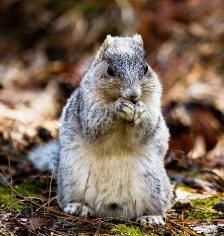 An innovative public-private partnership protected 233 acres located in the Nanticoke Rural Legacy Area through a perpetual conservation easement with the US Navy and the Maryland Department of Natural Resources, and transactional support from The Nature Conservancy and The Conservation Fund. This conservation effort was made possible with funding from the Department of Defense’s Readiness and Environmental Protection Integration Program (REPI), the Maryland Rural Legacy Program, and through private funds from Chesapeake Conservancy through the support of Mt. Cuba Center. The land will remain in private ownership and will continue to be managed for farming and other resource-based activities, but the easement precludes future development or incompatible use of the property.
An innovative public-private partnership protected 233 acres located in the Nanticoke Rural Legacy Area through a perpetual conservation easement with the US Navy and the Maryland Department of Natural Resources, and transactional support from The Nature Conservancy and The Conservation Fund. This conservation effort was made possible with funding from the Department of Defense’s Readiness and Environmental Protection Integration Program (REPI), the Maryland Rural Legacy Program, and through private funds from Chesapeake Conservancy through the support of Mt. Cuba Center. The land will remain in private ownership and will continue to be managed for farming and other resource-based activities, but the easement precludes future development or incompatible use of the property.
Live Stake Program
 With funding from the Foundation for Pennsylvania Watershed and 1994 Charles B. Degenstein Foundation, Chesapeake Conservancy worked in partnership with the Pennsylvania Department of Conservation and Natural Resources, Susquehanna University, and the Merrill W. Linn Land and Waterways Conservancy to collect and plant live stakes, living shrub and tree branches that root readily when inserted into the soil.
With funding from the Foundation for Pennsylvania Watershed and 1994 Charles B. Degenstein Foundation, Chesapeake Conservancy worked in partnership with the Pennsylvania Department of Conservation and Natural Resources, Susquehanna University, and the Merrill W. Linn Land and Waterways Conservancy to collect and plant live stakes, living shrub and tree branches that root readily when inserted into the soil.
These cuttings are embedded into the banks of streams for forest restoration projects. Growing trees on streambanks minimizes erosion of land and provides critical food for stream life and filters upslope runoff.
Expanding Blackwater National Wildlife Refuge
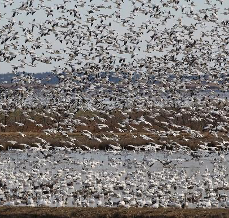 A partnership between the US Fish and Wildlife Service and Chesapeake Conservancy resulted in 27 acres of forested habitat being added to the Nanticoke Unit of Blackwater National Wildlife Refuge through the acquisition of a conservation easement. The easement was purchased using private funds secured by Chesapeake Conservancy from the Mt. Cuba Center and adds to the 155 acres that were added to the Refuge in 2018, with Chesapeake Conservancy help.
A partnership between the US Fish and Wildlife Service and Chesapeake Conservancy resulted in 27 acres of forested habitat being added to the Nanticoke Unit of Blackwater National Wildlife Refuge through the acquisition of a conservation easement. The easement was purchased using private funds secured by Chesapeake Conservancy from the Mt. Cuba Center and adds to the 155 acres that were added to the Refuge in 2018, with Chesapeake Conservancy help.
INNOVATION
Supporting Chesapeake Bay Watershed Restoration
A 2018 to 2024 collaborative agreement from the US Environmental Protection Agency (EPA) funds the Conservation Innovation Center’s work with partners to provide geospatial support to the Chesapeake Bay Program. CIC produces high-resolution datasets, such as land cover, land use, hydrography, and restoration opportunities, to provide an unprecedented level of detail to inform all levels of environmental decision making and track progress. The EPA grant builds on the Chesapeake Bay High-Resolution Land Cover Data Project that CIC completed in December 2016 for the Chesapeake Bay Program (CBP) and supports the goals of the 2014 Chesapeake Bay Watershed Agreement.
Artificial Intelligence
 Thanks to a grant from the Grayce B. Kerr Fund, Chesapeake Conservancy entered a new phase in its innovation technology—artificial intelligence (AI). Kumar Mainali, a geospatial data scientist, who holds a Ph.D. in ecology and M.S. in statistics, joined the team in 2019 to focus on accelerating the science behind our precision conservation data. Mainali uses AI to identify the land cover type of every square meter of the Chesapeake Bay watershed. Through machine learning, he is teaching the computer to detect a forest, a shrub, or a tree over a sidewalk or a building at a fine spatial scale and with very high accuracy. Mainali is also conducting an analysis of water quality in the Chesapeake Bay, crunching time series data of water quality from various locations.
Thanks to a grant from the Grayce B. Kerr Fund, Chesapeake Conservancy entered a new phase in its innovation technology—artificial intelligence (AI). Kumar Mainali, a geospatial data scientist, who holds a Ph.D. in ecology and M.S. in statistics, joined the team in 2019 to focus on accelerating the science behind our precision conservation data. Mainali uses AI to identify the land cover type of every square meter of the Chesapeake Bay watershed. Through machine learning, he is teaching the computer to detect a forest, a shrub, or a tree over a sidewalk or a building at a fine spatial scale and with very high accuracy. Mainali is also conducting an analysis of water quality in the Chesapeake Bay, crunching time series data of water quality from various locations.
Statistical Evidence for Precision Conservation
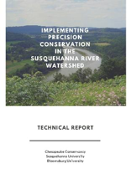 Chesapeake Conservancy provided a technical report for the National Fish and Wildlife Foundation (NFWF) that compiled findings from a three-year study period. The report validated that project selection and design guided by high-resolution data deliver better environmental returns for water quality.
Chesapeake Conservancy provided a technical report for the National Fish and Wildlife Foundation (NFWF) that compiled findings from a three-year study period. The report validated that project selection and design guided by high-resolution data deliver better environmental returns for water quality.
Supporting Conowingo Partnership
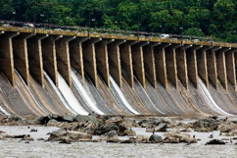
The EPA announced in October an award to Chesapeake Conservancy to track, verify, and report implementation of the Conowingo Chesapeake Bay Watershed Implementation Plan (WIP) and two-year milestones. The Conservancy is also working with the Center for Watershed Protection, University of Maryland Sea Grant Extension Program, and the Harry R. Hughes Center for Agro-Ecology to develop the WIP and conduct outreach about the WIP in Pennsylvania and Maryland.
New Tool to Support the James River
To support the James River Water Quality Improvement Program, a new program of the Virginia Environmental Endowment (VEE), the Chesapeake Conservancy’s Conservation Innovation Center developed a “Restoration Planner,” a web-based application to support planning and evaluation of restoration projects. This tool provides VEE and its grant applicants with information about where conservation and restoration projects are likely to produce the greatest water quality benefits.
Congressional Briefing on Precision Conservation
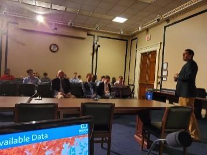
In December, the CIC was invited to participate in a congressional briefing on precision conservation. The event on Capitol Hill was held by the Chesapeake Bay Watershed Task Force.
Anne Arundel Tree Canopy Analysis
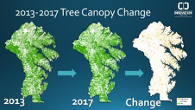 The CIC helped generate and apply new data for Anne Arundel County, Maryland, that revealed that the county was losing trees faster than almost any other county in the state. The change analysis indicated that the county had a net loss of ~2356 acres of tree canopy during this time period. This data helped inform a change in Anne Arundel County law, which is inspiring other counties in the state to act on forest conservation policy.
The CIC helped generate and apply new data for Anne Arundel County, Maryland, that revealed that the county was losing trees faster than almost any other county in the state. The change analysis indicated that the county had a net loss of ~2356 acres of tree canopy during this time period. This data helped inform a change in Anne Arundel County law, which is inspiring other counties in the state to act on forest conservation policy.
INSPIRING EXPLORATION
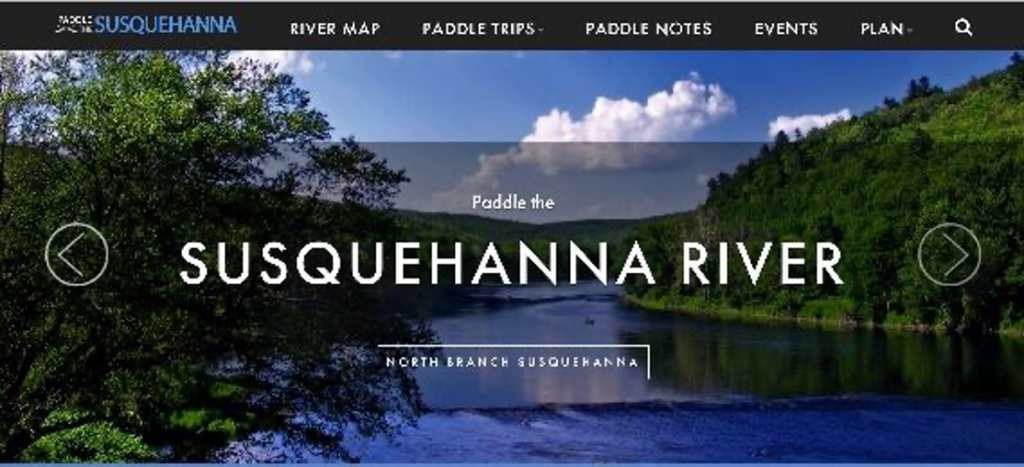
New Paddling Resource for the Susquehanna River
NPS Chesapeake and Chesapeake Conservancy launched a new partnership website, PaddletheSusquehanna.com, to help residents and visitors explore the Susquehanna River. The new website serves as a home for launch information, water trails, and trip itineraries for the four regions of the river, including the North Branch, West Branch, Middle, and Lower sections. Blog content highlights specific places, activities, and personal first-hand experiences. The new website joins PaddletheChester.com and PaddletheSassafras.com—created by NPS Chesapeake and the Sultana Education Foundation—and PaddlethePotomac.com in linking paddlers to the waterways throughout the Chesapeake. The Paddle series serve as companion websites to FindYourChesapeake.com, the NPS Chesapeake and Chesapeake Conservancy’s partnership tourism-focused website that features authentic Chesapeake experiences and over 350 special places around the region.
CHAMPIONS OF THE CHESAPEAKE
Thank you to our generous sponsors for their support of this event!
Ann P. Swanson, executive director, Chesapeake Bay Commission, accepted the 2019 Lifetime Achievement Award, presented by Chesapeake Conservancy President and CEO Joel Dunn and US Senator Chris Van Hollen (MD).
The 2019 Public Service Award was received by Chesapeake Bay Commission Leadership—Senator Gene Yaw (PA), Delegate David Bulova (VA), and Senator Guy Guzzone (MD). Presented by Chesapeake Conservancy President and CEO Joel Dunn (far left) and US Representative Bobby Scott (VA) (far right).
Donors
Our sincere appreciation to the individual, foundation, and corporate donors who have made our work possible. We truly appreciate your generosity.
Seven Generations Society
(Planned Gifts)
Anne Gordon Keidel Trust
$25,000+
Anonymous
Bunting Family Foundation
The 1994 Charles B. Degenstein Foundation
The Keith Campbell Foundation for the Environment
Crystal Trust
explore.org
Farvue Foundation
Foundation for Pennsylvania Watersheds
Hamer Foundation
The Helena Foundation
John G. & Jean R. Gosnell Foundation, Inc.
Longwood Foundation
Turney McKnight
Merrill Family Foundation
Shared Earth Foundation
Welfare Foundation
$15,000-$24,999
Agua Fund
Bancroft Foundation
Blue Waters Foundation
Mary and Charles Dankmeyer
Randall Larrimore and Cathy Cutright
The MHE Foundation
REI
$10,000-$14,999
Anonymous
Beveridge & Diamond, P.C.
James G. Corckran, II Charitable Foundation
James M. and Margaret V. Stine Foundation
John C. Corckran, Jr. Charitable Foundation
Virginia S. Warner Foundation
$1,000-$9,999
Anonymous (3)
Darla Albert
Curtis Backus
Scott Beatty
Mark J. Belton
Thad and Renee Bench
Lex Birney
Aaron Bowden
C. Robert Bunch and Lilia D. Khakimova
Anna Chaney and Herrington On The Bay
Chesapeake Bay Foundation
Kevin and Katie Cooke
The Curtis & Edith Munson Foundation
The Dealy Foundation, Inc.
Leslie Delagran and Mark McConnell
The Dillon Fund
Elinor Farquhar
Richard L. Franyo
Bob and Chris Friend
Garden Club of Annapolis
Paul Hagen and Chris Jahnke
Jim and Victoria Handa
Stephen F. Harper
Barbara Haupt
Carolyn and David Houck
Joe and Martha Janney
James L. Jarvis
Jim and Patty Rouse Charitable Foundation, Inc.
Jay and Tara Joseph
Randal Kell
Lancaster County Conservancy
Dale and Patricia Larrimore
Judy Larrimore
David Law
Lucie Lehmann
Mahan Rykiel Associates
Mariposa Fund
Joseph McCauley and Julia Herrick
Patrick McGeehin
Liza and Sky Morehouse
National Marine Manufacturers Association
National Parks Conservation Association
John and Sue Neely
New Pig
The Peterson Family
Ed and Kathy Quinn
Roemer Foundation
Heather L. Ross and Edward L. Strohbehn Jr.
Rotary Club of Dunn Loring-Merrifield
Schuh Family Foundation
Richard Scobey
Shore United Bank
Mark and Maansi Travers
University of Maryland Foundation
David T. Urban
Denham Ward and Debra Lipscomb
Molly Ward
Weller Development
Alice and Hill Wellford
Doug Wheeler
Great Blue Heron Club ($500-$999)
Anonymous (2)
1880 Bank
Nancy Bekavac
Gray Benoist
Ann Bissell
Duncan and Christina Cocroft
The Couser Family
Melissa Ehrenreich
Betty M. Garrand
Pamela Gregory
Verna Harrison and Bob Pelrine
Alex Larrimore
Bruce and Kathy Lowry
Keith McLoughlin
David and Lisa Mills
John Moag
Mark and Magda Westerhout Mobley
Jeffery More
Elizabeth and James Morley Jr.
David and Kimberly Morrow
Mamie Parker
Mark and Karen Perreault
Carmen F. Perry
Leo Pound
Russ and Beckie Ray
Mace Rosenstein and Louise de la Fuente
Ellen Shiery and Andrew Blischak
Nick and Annie Shreiber
Melissa and Peter Smith
Roger and Sally Stobbart
Amy Stump
John and Kimberly Thacker
Parvin Titus
Matthew Trotta
Carol Van Wyk
Bruce Weininger
Wetland Studies and Solutions, Inc.
Eagle Club ($250-$499)
Scott and Kathy Allan
Jeff and Ashley Allenby
Steve and Nancy Allenby
David Anderson
Bruce Armistead
Patricia Aspray
Michael Avery
Barbara Bass
Patricia P. Baum
Steve and Clare Blaine
Curtis Bohlen
Daniel Bornstein
Susan Borschel
Judith Brennan
Elizabeth Buck
Peter Bungay
Marc Bunting
Teresa Castracane
David Castro
Bonita Coffey
Larry Culleen and Nina Weisbroth
Eugene Cunningham
Kent and Meredith Damschroder
Janice Davis
Bill Dickinson
Joel Dunn
Lorraine and Jim Ellerson
Joan and Eric Fennekohl
Paul Ferraro and Kristin Rowles
William Gard
Kyle P. German
Joseph Gill
Glen’s Garden Market
Dr. Jonathan D. Green and Ms. Lynn Buck
John and Michele Griffin
Ed Haile
Neal and Linda Halsey
Christine Hayes
Niels Holch
Nina Rodale Houghton
Matthew Hunley
William Hunter
Gabrielle Janney
Peter M. Jarowey II
Clyde Kelly
Megan Lamb
Alexandra Lehmann
Jim Lighthizer
Glennda and David Lockard
William Loscomb
Dennis W. Meadowcroft
Sara Morningstar and Philip Katz
Jeff and Linda Norris
Mary Margaret Nousek
Kim Pins and Bill Moeller
The Rappahannock Tribe
James and Elizabeth Reid
John and Barbara Reynolds
Janet and James Ross
Brooks Royster
Bill and Wendy Schickler
Anne Scott
John and Lisa Sherwood
Luke and Susan Shingledecker
Simon Sidamon-Eristoff
Doug and Lynn Smarte
Daniel Stack
Robert Stanton
Amy Stolarski
Thomas Straehle
Valerie Twanmoh
Stafford and Sue Warren
C.D. Wrestler
Mark Young and Rachel Carren
Osprey Club ($100-$249)
Anonymous (8)
Nancy Abrams-Rivera
Mike and Kathleen Albert
Patty Allen
James Aluisi
Barbara Anderson
George Audi
Rita Bank
Susan Barnett
Maureen Barrett
Carol Barron
Patty Barry
Rebecca Beichner
Hedrick Belin and Mary Bissell
Tim and Kathy Berghoff
Jason and Caryn Berstein
Gordon Binder and Michael Rawson
Birgit
Marisa Birns
Cheryl Bishop
Jim and Shirley Blackwell
Posey and Bill Boicourt
Peter Bouxsein
David and Suzanne Boyd
Amy Brumley
The Carter-Minnemeyer Family
J. David and Anna Castle
Jane Chambers
Sherry E. Clark
Joseph M. Coale
William Cobb
Walter & Suzanne Cochran-Bond
Council Fire
Mary Ann Cronin
LaDonna Curzon
Michael Czawlytko
Carly Dean
John Deault
Paula A. Degen
D. Cameron DeHeer
Derek
Carla Dinowitz
Nick DiPasquale
Diane Donato
Michele Doyel
Mary Clare Duffy
Phil Dunn and Judi Herrmann
Barbara Earley
Cassandra Edwards
Susan Ehrenreich
Devon Parr Ellis
Jim Ellis
Dorry Emmer
P. Michael and Karen Errico
James Fellowes
Kathleen Helen Felmey
Mike and Whitney Fiore
The Garay Family
Garden Club of Twenty, Inc.
Nicholas Gardner
Linda Gaydos
Joyce Glatfelter
The Godstrey Family
Cynthia Wagner Golliday
Bill Gourgey
Mary Greiner
Susan Hahn
Keith Hammond
Nancy Hammond
Chris and Meg Hankin
Melinda and Terry Harris
Patricia Harvey
Ralph E. Heimlich
Doug and Julie Henderson
Jo High-Downey and Skip Downey
Emma Holmes
Mary Holthaus
Faith Hoover
Cacky Janssens
Elizabeth G. Johnson
Elizabeth Jones
Margaret D. Keller
Barbara Kingsford
Betsy Kirkpatrick-Howat
Margery D. Knight
Karen Kostyal
Cynthia Langhirt
Linda Laramy
Rebecca Lawson
Charles and Leslie Leaver
Patrick Leech
Ruby S. Lehman
Sharon Lester
Kim Liddell
Steve and Ann Lindblom
Marilyn A. Lockwood
Matt Lockwood
AliceAnne Loftus
Louis and Nayoung
Fred and Jean Lucas
Christy Macy
Pamela Marks
Joseph and Anne Maroon
Michael and Phyllis McCauley
Ed McMahon
The McQuillins
Ann Mech
Amy and John Metzger
Cyndy Carrington Miller
Emily Mills and Danny Berghoff
Aimee and Jay Murphy
The Honorable W. Tayloe Murphy Jr.
Denis Murray, Sr.
Mitch Neitzey
Eric Nelson
Laura Neuman
Wendy O
Keith O’Connor
Matt Olear
Kent Palcanis
Cassandra Pallai
Wayne and Anne Patterson
Delphine Peck
Steven and Polly Percy
Nancy Pesiri
Sue Pitchford
Ann Powers
Mitchell Pressman
Wesse Ranes
Rebecca
Scott Reichert
Sandra Resner
V.B. “Tack” Richardson III
Arthur Robinson
Ruth Robinson
Vonnah Rolband
Kathy Roush
True Rowan
Catherine Rygiel
Alan Saavedra
Jeffrey Sabot
Ana Sanchez
Eric Schwaab
Jay and Camilla Schwarz
Martha Schwieters
Ruth Seaby
Robert and Audrey Shade
Rick Sheridan
Tom Shock
Kathleen Shultz
Michael and Catherine Shultz
Mike and Laura Singleton
Cate Smith
The Soobitsky’s
Kristin Sorensen
Michael Stack
The Stephenson Family
Valerye Strochak
Stephanie Studenski
Patrick Sullivan
Ann and Eric Swanson
Linda Tatro
Marjorie Taylor
The Teddies Unlimited Fund
The Thomas Family
Sharon Thomas
Mary Ann Torkelson
Daveyne Totten
Anthony Trenkle
Lorie Tudor
Craig Turner
Wilbert Utsey
Katharine Van Name
Amy Vaughn
Vince
Louise Wagner
Robert Waldman
Linda and Robert Walker
Diana Weatherby
Rick and Dona Weingarten
Jay Weitzel
Harrison and Sue Wellford
Kathryn Wesson
John Wethern
Cindy Whittle
Laura Wiggans
Sharee Williamson
Michael and Joyce Wilson
Barbara L. Winner
David Wye
David Yang
Donna and Bob Zellers
John Zepp
Chesapeake Stewards Club
(Monthly Donors)
Barbara Anderson
Verna Harrison and Bob Pelrine
Christine Hayes
Matthew Heil
Matthew Hunley
Martha Janney
Lucie Lehmann
Michael and Phyllis McCauley
Theresa Robinson
Melissa and Peter Smith
Kristin Sorensen
Thomas Straehle
In-Kind Gifts
Benchworks
Beveridge & Diamond
Keith Chapman
National Aquarium in Baltimore
Matching Gifts
Baird Foundation, Inc.
Bank of America Matching Gift Program
Campbell Soup
Freddie Mac
Main Street America Group
Olin Corporation Charitable Trust
Union Privilege
Donation Honorees
All the wildlife in the Chesapeake Bay
Audrey and Tom’s (osprey) Young Birds
Ben Young
Bert Carp
Chocolate
Christine and Scott Schreibstein
Dale G. Larrimore, Esquire
Daniel Butrymowicz
Doug Krause
Dr. Spitzer
Edwin H. Copenhaver III
Emilie Campbell
Jeff, Jody, and the entire awesome CC team!
Joel Dunn
John Baugher Jr.
Joseph and Genevieve Coyle
Karen Noonan
Katie Walker
Lawrence O. Hickey
Leslie Delagran
Marilyn Gibson
Michael J. Ready
Mr. Com and the Ospreys
Ms. Stumpy Squirrel
Naomi Dove
Nate and Kacey Hynson
Nathaniel Reed
Our Seaford relatives and friends
Randy Larrimore
Richard B. Thompson
Robert Whitescarver
Rolph Townshend
Sen. John W. Warner
Sid Gottlieb
Stella Olear
Susan Shingledecker
Susz Campbell
Teela Robertson
The Crazy Osprey Family
The Nanticoke
Tom and Audrey
William, Sadie, Finn, and Hal
In Memoriam Honorees
Alice Von Saunder
Charlie Dayton
Debby Kalk
Dick Kay
Governor Harry Hughes, the Bay’s best friend
James Patten
James Winston Watts III
John Hubert Edwards
John Willey
Larry Birns
Larry Kile
Mabel Madden and Pat Morris
Mother of Linda Valle
Our dog, Gracie
Paul Fisher
Richard Haberman
Tony Donato
Partners and Clients
Alliance for the Chesapeake Bay
American Farmland Trust
Anne Arundel County, Maryland
The Campbell Foundation
Chesapeake Bay Commission
City of Seaford
Ecosystem Investment Partners
Farmland Preservation LP
Foundation for PA Watersheds
Grayce B. Kerr Fund, Inc.
Harford Land Trust
James River Association
Land Trust Alliance
Lincoln Institute of Land Policy
Maryland Department of Natural Resources
Microsoft Corporation
National Geographic Society
National Park Service-Chesapeake Bay Office
Northern Virginia Conservation Trust
Pennsylvania Department of Conservation and Natural Resources
River Network
University of Virginia
The U.S. Endowment for Forestry and Communities, Inc.
U.S. Fish & Wildlife Service-Chesapeake Bay Office
Valleys Planning Council
Virginia Department of Conservation and Recreation
Virginia Environmental Endowment

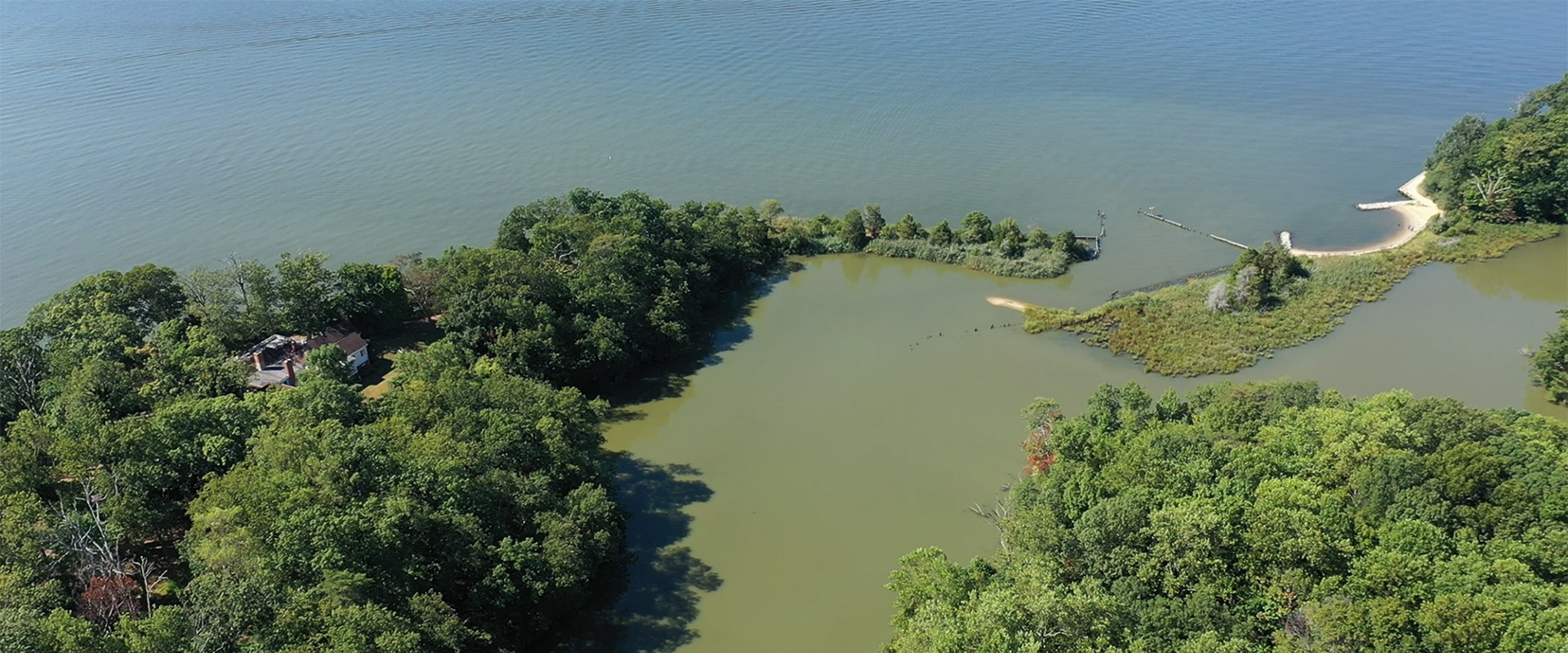
 "The Wilderness Society is thrilled to be working closely with Chesapeake Conservancy to advance our shared goals of protecting critical ecological landscapes, elevating marginalized voices in conservation dialogues, and charting a course for an equitable environmental future.”
"The Wilderness Society is thrilled to be working closely with Chesapeake Conservancy to advance our shared goals of protecting critical ecological landscapes, elevating marginalized voices in conservation dialogues, and charting a course for an equitable environmental future.”
 “We appreciate all of the work Chesapeake Conservancy does to assist local organizations like ours make better decisions, and more effectively convey our messaging, through high-resolution land cover datasets and other spatial work and analyses they provide.”
“We appreciate all of the work Chesapeake Conservancy does to assist local organizations like ours make better decisions, and more effectively convey our messaging, through high-resolution land cover datasets and other spatial work and analyses they provide.”
 "The Campaign for Nature strives to protect at least 30 percent of the land and sea by 2030. We know to achieve this goal, we need strong regional nonprofits like Chesapeake Conservancy, using technology and partnerships toward their mutual goal of protecting 30 percent of the Chesapeake by 2030."
"The Campaign for Nature strives to protect at least 30 percent of the land and sea by 2030. We know to achieve this goal, we need strong regional nonprofits like Chesapeake Conservancy, using technology and partnerships toward their mutual goal of protecting 30 percent of the Chesapeake by 2030."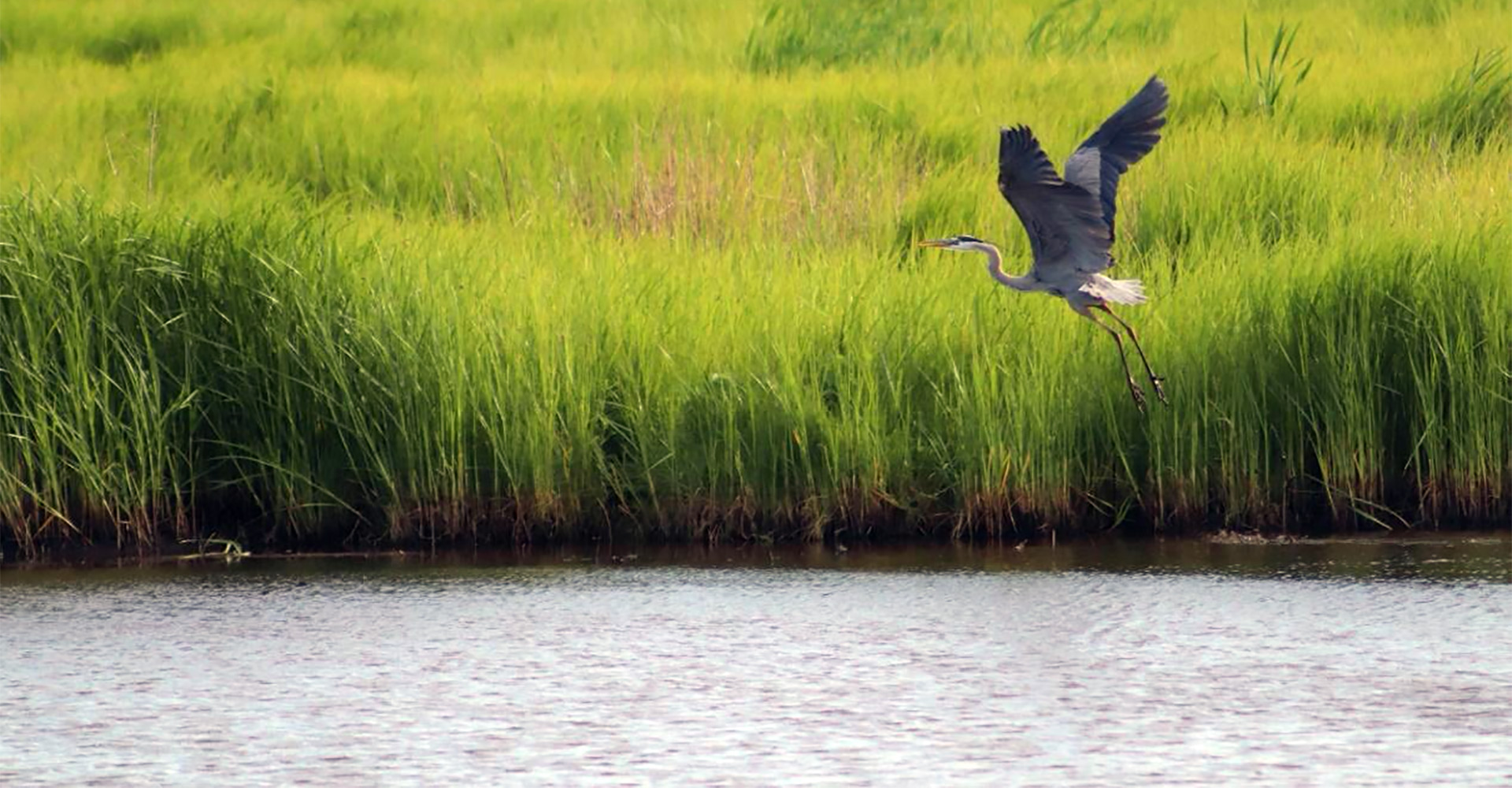
 More than 18 million people call the Chesapeake home and have fallen in love with its awesome landscapes and rivers. So much so that thousands of acres of open space disappear each year. We are in a race against time to conserve, protect, and restore what makes the Chesapeake so special before it is too late. Thank you for supporting our work. No amount is too small or too large to help us achieve great things together.
More than 18 million people call the Chesapeake home and have fallen in love with its awesome landscapes and rivers. So much so that thousands of acres of open space disappear each year. We are in a race against time to conserve, protect, and restore what makes the Chesapeake so special before it is too late. Thank you for supporting our work. No amount is too small or too large to help us achieve great things together.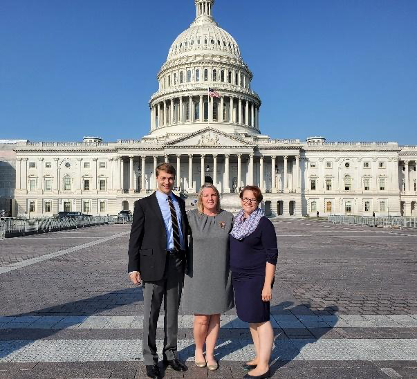
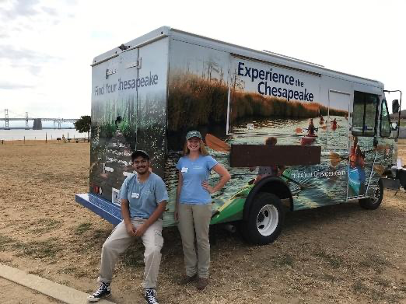
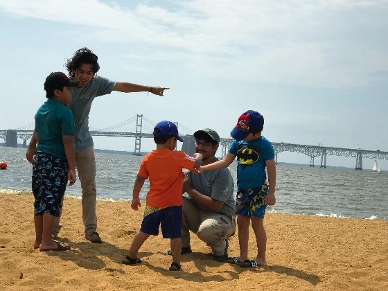
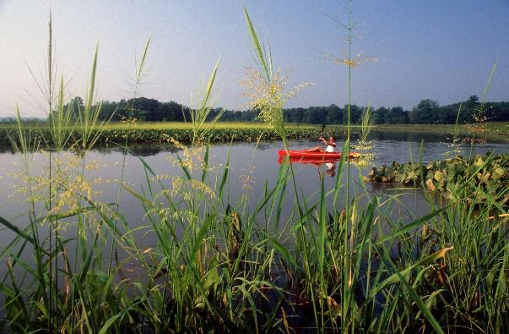

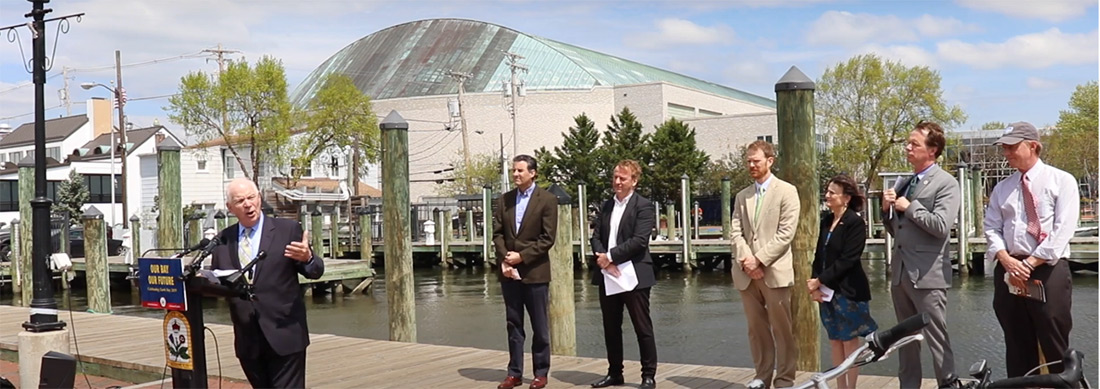
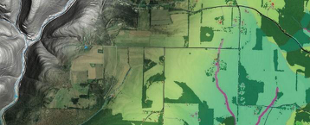
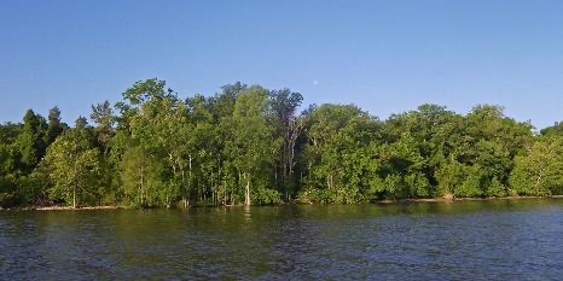
 Along with NPS Chesapeake, Chesapeake Conservancy serves as the co-convener of the Chesapeake Conservation Partnership, a coalition of organizations and agencies collaborating to conserve culturally and ecologically important landscapes to benefit people, economies, and nature throughout the six-state watershed.
Along with NPS Chesapeake, Chesapeake Conservancy serves as the co-convener of the Chesapeake Conservation Partnership, a coalition of organizations and agencies collaborating to conserve culturally and ecologically important landscapes to benefit people, economies, and nature throughout the six-state watershed. 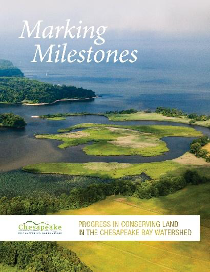 In 2019, Chesapeake Conservation Partnership released Marking Milestones: Progress in Conserving Land in the Chesapeake Bay Watershed, the most comprehensive survey of land conservation and funding in the watershed in a decade. The report showcases the tremendous value of the Chesapeake Bay watershed and the remarkable success stories of people working to protect the land that supports the region’s quality of life. The report analyzes data showing that 1,358,456 acres of land throughout the watershed have been permanently protected since a previous report in 2010. This achieves 68 percent of the goal set in the Chesapeake Bay Watershed Agreement to protect an additional 2 million acres by 2025. Marking Milestones not only reports land conservation progress but also presents a call to action to conserve the approximately 640,000 acres remaining to achieve the 2025 goal, as well as proposes additional goals for 2030 and 2050. The report, which was recognized by a 2019 partnership award from the Public Lands Alliance, is available at
In 2019, Chesapeake Conservation Partnership released Marking Milestones: Progress in Conserving Land in the Chesapeake Bay Watershed, the most comprehensive survey of land conservation and funding in the watershed in a decade. The report showcases the tremendous value of the Chesapeake Bay watershed and the remarkable success stories of people working to protect the land that supports the region’s quality of life. The report analyzes data showing that 1,358,456 acres of land throughout the watershed have been permanently protected since a previous report in 2010. This achieves 68 percent of the goal set in the Chesapeake Bay Watershed Agreement to protect an additional 2 million acres by 2025. Marking Milestones not only reports land conservation progress but also presents a call to action to conserve the approximately 640,000 acres remaining to achieve the 2025 goal, as well as proposes additional goals for 2030 and 2050. The report, which was recognized by a 2019 partnership award from the Public Lands Alliance, is available at 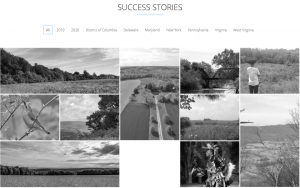 Chesapeake Conservation Partnership created a microsite to share the many conservation success stories from 2019.
Chesapeake Conservation Partnership created a microsite to share the many conservation success stories from 2019.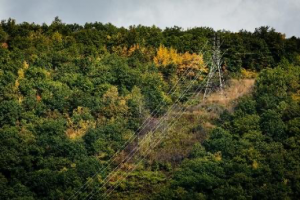 A 2019 report prepared by the Environmental Law Institute for the Chesapeake Conservation Partnership recommended specific actions that Maryland, Pennsylvania, and Virginia could consider to address the impacts of proposed energy projects while improving land conservation outcomes. The report calls for a holistic approach for planning energy projects such as electric transmission lines, gas pipelines, and solar/wind facilities. Projects should factor in landscape impact before the permitting process begins. The report, “Opportunities to Improve Landscape-Scale Mitigation for Energy Projects in the Chesapeake Region” is available at
A 2019 report prepared by the Environmental Law Institute for the Chesapeake Conservation Partnership recommended specific actions that Maryland, Pennsylvania, and Virginia could consider to address the impacts of proposed energy projects while improving land conservation outcomes. The report calls for a holistic approach for planning energy projects such as electric transmission lines, gas pipelines, and solar/wind facilities. Projects should factor in landscape impact before the permitting process begins. The report, “Opportunities to Improve Landscape-Scale Mitigation for Energy Projects in the Chesapeake Region” is available at 

